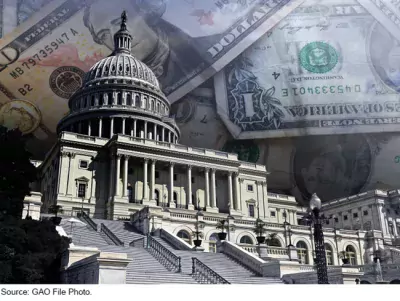U.S. Government’s 2020 Financial Statements Reveal Serious Management Weaknesses and Ongoing Efforts to Correct Those Weaknesses
The federal government has recently issued its 2020 financial statements. These statements provide a comprehensive view of government finances—including spending, revenues, and debt. However, like in past years, serious financial management weaknesses prevented us from giving the government a “clean opinion” that its financial statements are fairly presented. These weaknesses continue to hinder the federal government from having reliable, useful, and timely financial information to operate effectively and efficiently. Congress and the Administration need reliable information on spending, revenues, and debt. Without reliable statements, which include rectifying some of the concerns we outlined below, policymakers are not best positioned to plan for our fiscal future.
Today’s WatchBlog post explores our new report on the government’s financial statements and explains why we are unable to render such an opinion.
Image

Serious financial management weaknesses
Our audit report on the federal government’s FY 2020 financial statements discusses serious financial management weakness and ongoing efforts to address them. For example:
- The Department of Defense—which accounted for about 18% of federal net costs—continues to face long-standing financial management challenges. For example, DOD is unable to account for its property and equipment and has ineffective information system controls. DOD has made some improvements. For FY 2020, DOD identified nearly $3 billion in materials that could be reused and closed 24% of findings from prior year financial statement audits. However, as in prior years, DOD auditors couldn’t say whether or not there were mistakes in DOD’s financial statements. DOD acknowledged that achieving a clean opinion will take time and is prioritizing critical areas for improvement.
- The federal government is not able to adequately account for federal transactions and balances between agencies and properly prepare the government’s financial statements. Treasury is making progress toward addressing these weaknesses. For example, Treasury issued new accounting guidance for intragovernmental transactions and balances, and continued to assist federal agencies in better accounting for their transactions with other agencies. Also, Treasury implemented new processes to improve how it collects data from agencies.
- The Small Business Administration (SBA) needed to implement COVID-19 related relief as quickly and efficiently as possible in order to be responsive to the needs of small businesses affected by the pandemic. But, this quick response led to several financial management weaknesses, resulting in an inability for the auditor to express an opinion on SBA’s fiscal year 2020 financial statements. Concerns over the SBA’s management and oversight of COVID-19 relief programs, including the susceptibility to improper payments (payments made in error), prompted us to add SBA’s emergency loans for small businesses on our latest High Risk List.
Why it matters? Our long-term concerns
As we have reported, Congress and the administration have responded in an unprecedented manner to the COVID-19 pandemic and the resulting severe economic repercussions. However, the fiscal response and the economic downturn generated a substantial increase in federal debt. Once the pandemic recedes and the economy substantially recovers, Congress and the Administration should quickly pivot to developing an approach to place the federal government on a sustainable long-term fiscal path.
Federal agencies have opportunities to contribute to a sustainable fiscal future right now. For example, the IRS could take steps to close the roughly $381 billion yearly tax gap—the difference between taxes owed to the government and taxes paid to the government. The tax gap, and the overall enforcement of tax laws made our High Risk List again this year.
Also, individual agencies can help to reduce improper payments (payments made in error) estimates of which total about $206 billion for FY 2020, up from $175 billion for FY 2019. This amount generally doesn’t include potential payment errors related to COVID-19 response and recovery efforts—which may be substantial. Agencies can take steps to determine the full extent of improper payments and take appropriate actions to reduce them.
Federal Financial Management Improvements
Overall, the federal government has made significant strides in improving financial management since the Chief Financial Officers Act of 1990 was enacted. For example, 22 of 24 major agencies received clean opinions on their FY 2020 financial statements, up from 6 agencies for FY 1996. You can find out about the progress federal agencies have made in financial management by checking out our August 2020 report.
- Comments on GAO’s WatchBlog? Contact blog@gao.gov.




